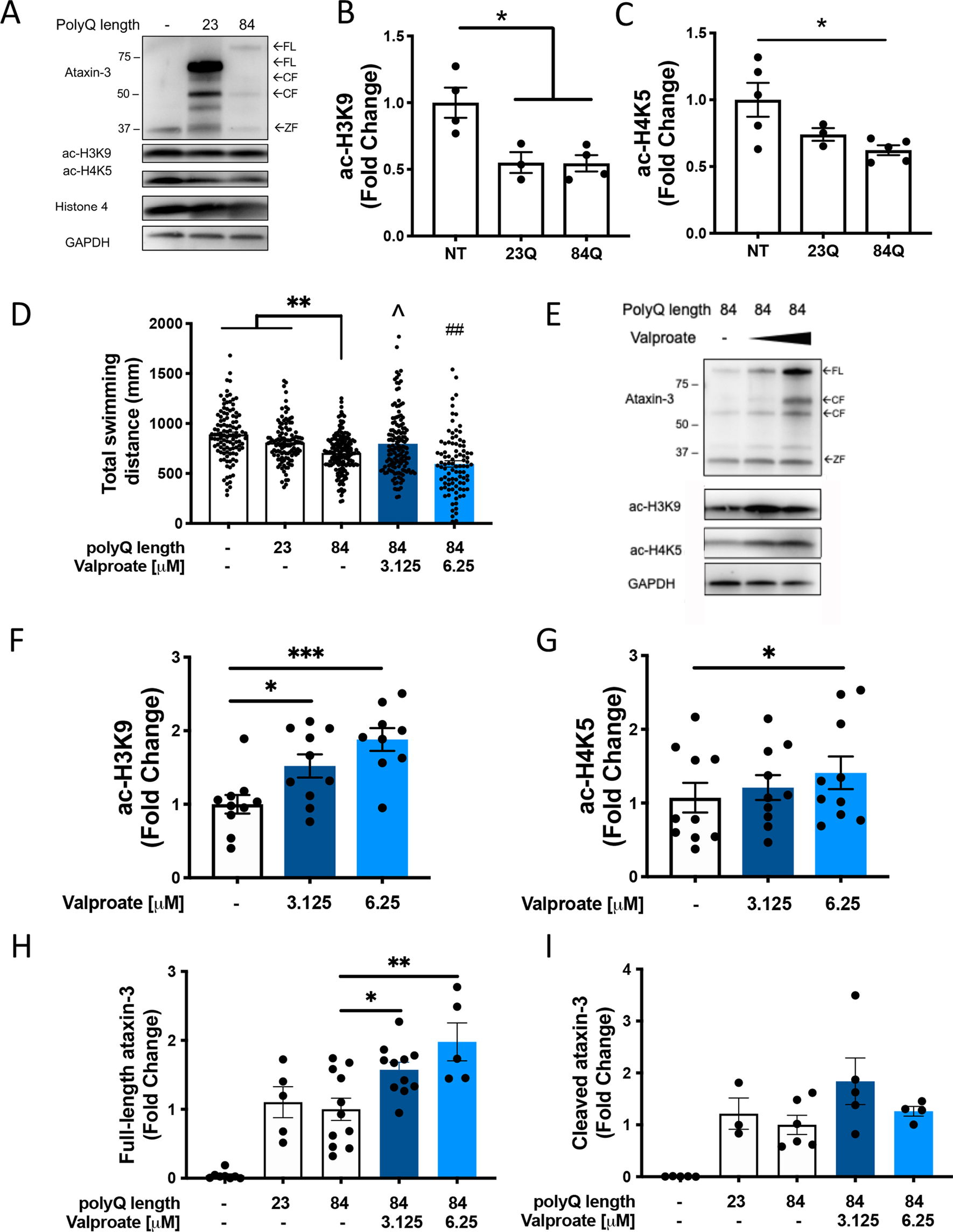Fig. 1

Levels of acetylated histones 3 and 4 are decreased in MJD zebrafish and sodium valproate increases levels of acetylated histones and locomotion in transgenic MJD zebrafish. A Immunoblots of 6-day-old transgenic MJD zebrafish expressed human ataxin-3 with full-length (FL) ataxin-3, cleaved (CF) ataxin-3 and endogenous zebrafish ataxin-3 (ZF). Transgenic MJD zebrafish also have decreased levels of acetylated histone 3 (ac-H3K9) and 4 (ac-H4K5) with no differences in histone 4. B Quantification of ac-H3K9 showed wild-type and mutant ataxin-3 larvae with significantly lower levels of ac-H3K9 compared to the non-transgenic control (*p < 0.022, n = 3–5). C Densitometric analysis of the amount of ac-H4K5 revealed a significant decrease in ac-H4K5 in the mutant ataxin-3 zebrafish compared to the non-transgenic control (*p = 0.026, n = 3–5). D Treatment of MJD zebrafish with low-dose sodium valproate (valproate; 3.125 µM) increased the distance travelled during movement tracking to control treated EGFP-Ataxin-3 84Q (^p = 0.019, n = 93–161). By contrast, high dose valproate (6.25 µM) decreased the distance travelled compared to EGFP-Ataxin-3 84Q, ##; p = 0.008. E Western blotting of valproate treated EGFP-Ataxin-3 84Q larvae resulted in increased levels of full-length human ataxin-3, ac-H4K5 and ac-H3K9. F Quantification of ac-H3K9 levels revealed valproate treatment increased ac-H3K9 in a dose dependent manner (*p = 0.004 and ***p = 0.003; n = 9). G Quantification of ac-H4K5 showed an increase with 6.25 µM valproate treatment (*p = 0.043, n = 10). H Quantification of human FL ataxin-3 showed significantly increased levels with both concentrations of valproate treatment compared to vehicle treated mutant ataxin-3 fish (*p = 0.0495, **p = 0.002, n = 5–11). I Quantification of human CF ataxin-3 relative to loading control showed no changes after treatment with sodium valproate (n = 3–6). Data represent mean ± SEM. Statistical analysis used in this figure were paired and unpaired one-way ANOVA with Tukey post-hoc analysis
